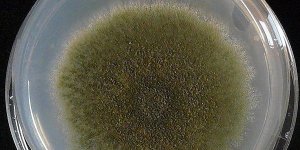| News / Science News |
New study of comets provides insight into chemical composition of early solar system
A new study by University of Central Florida researchers has found strong evidence that the outgassing of molecules from comets could trace the chemical composition of the early solar system.

Researchers compiled relative abundances of water, CO2 and CO to test predictions of early solar system evolution. Photo: NASA/JPL-Caltech/UCLA
Outgassing occurs when comets, which are small bodies of dust, rock and ice in the solar system, warm and start to release gases.
The study was led by Olga Harrington Pinto, who received support from the LSSTC Data Science Fellowship program, which is funded by the Large Synoptic Survey Telescope Corporation.
As part of her research, Harrington Pinto compiled the relative abundances of water, carbon dioxide and carbon monoxide gases from 25 comets to test predictions of solar system formation and evolution. Measuring the ratio of certain molecules present after outgassing from comets can provide insights to the chemical composition of early solar systems.
Harrington Pinto combined data from different telescopes and research teams when the measurements were simultaneous and she could confirm that the data were well-calibrated.
"One of the most interesting results is that comets very far from the sun that have never, or only rarely, orbited near the sun, produced more CO2 than CO, whereas comets that have made many more trips close to the sun are the opposite," Harrington Pinto said. "This had never been seen conclusively before."
Harrington Pinto says the next step is to analyze observations her team made with the James Webb Space Telescope to directly measure carbon monoxide and carbon dioxide and compare the results with this study. (U.S. National Science Foundation)
YOU MAY ALSO LIKE





